A Los Angeles writer from Kashmir long yearned to visit a small town called Cashmere in Washington state, in the Pacific Northwest, that derived its name from the conflict-ridden Kashmir Valley (found in the northwestern Indian subcontinent). After a lifetime in the U.S. of being told go back to where you came from, she wondered if she would finally feel at home.
Last August, I ventured east from Seattle into the Cascades. The enormous peaks lush with fir forests felt like Kashmir. I played sappy contemporary Kashmiri music, and sang along teary-eyed to “Ride Home” from Alif. He pleads with his mouji, mother, but really Kashmir, mat gas zaayay, “Please don’t wither away.” Diaspora’s double-sting: Something reminds you of home, but also that you’re not there — or can’t go there.
But the mountains began to shrink into sandy hills with scattered pines. I passed ranches and prairies.
Off US-2, a sign greeted me: “Welcome to Cashmere.” Years ago, I’d discovered this town, proudly named after the Kashmir Valley, not the wool, and yearned to come ever since.
After a lifetime of being told to go back to where you came from, could I — a Kashmiri living in America — belong, at last, in Cashmere? I crossed the bridge into town. Just below me, and my anticipation, was the Wenatchee River, raging.
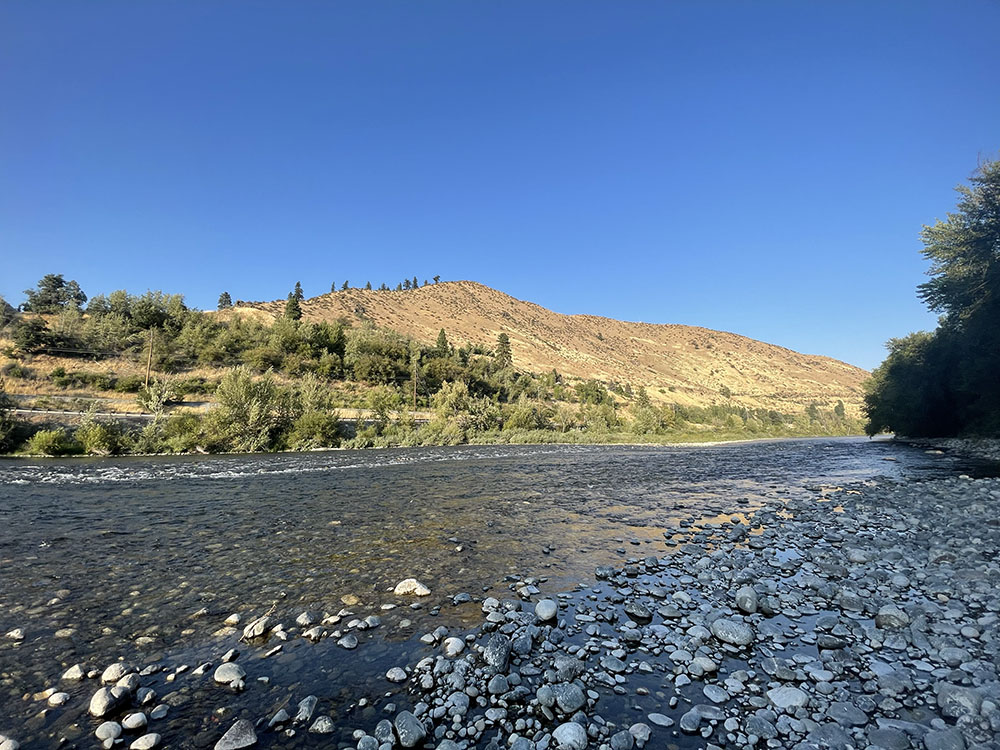
Covered walkways line the quaint storefronts of Cashmere’s downtown on Cottage Avenue. Every sign tickled me: Cashmere Veterinary Clinic, Cashmere Beauty Shop, Cashmere Valley Bank, Cashmere Youth Baseball, Vale Elementary School. When I saw the Cashmere Baptist Church, I chuckled aloud. Such an unlikely pairing. The church’s digital sign flashed: “WE LOVE CASHMERE.” Me too, Baptists, me too, I thought. I stayed at the Cashmere Inn, and the young hipster at the counter was the first person I told: “I’m from Kashmir!” He smiled.
Though there were plenty of flyers for the Cashmere Food Bank posted around, the town of 3,200 people is buoyed by the agriculture industry and key businesses like the Crunch Pak fruit snack plant.
Vast pear, cherry, and apple orchards encircle the town. A walk in the park along the river quickly quelled my worry of being the lone brown face. Everyone there, save a few white kids at the skate park, was Latino. My friends and I often joke about how as immigrants, we love to take over public parks.
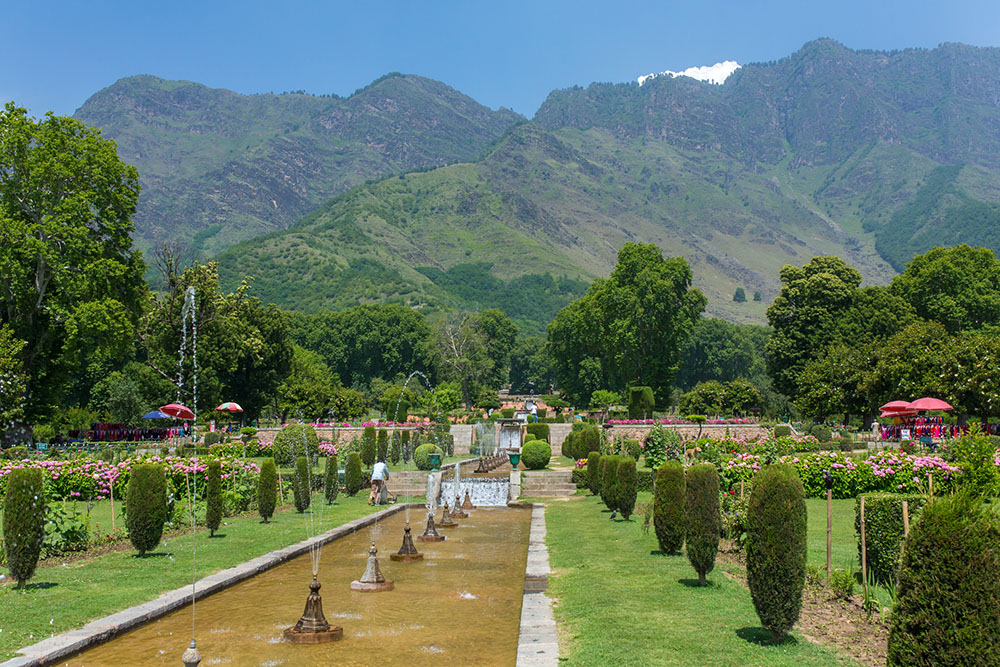
It wasn’t quite the manicured Mughal Gardens in Srinagar, Kashmir’s capital, but I longed for Shalimar or Nishat Bagh. Off the footpath, I crossed some rocks to get to the river. The clear current gushing into rapids took me to the Lidder and Sindh. Like the Wenatchee, they are wild tributaries whose forceful flows stretch alongside the mountains. The only thing missing here was a herd of parched sheep and the clicks of their drover. Eyeing the few pines on the bare range above, I touched the cool water. Light from the sunset flickered on the surface. I rubbed my face, as I did in any village stream back home. I was in Kashmir, in Cashmere. Maybe I could see myself in this small town.
A memorial interrupted the park’s comfort: Chunks of the Pentagon and the World Trade Center destroyed on 9/11 were twisted into a sculpture. Stone columns bore the names of first responders. Who decides what gets remembered? A worn display case offered some history. The first photo shows a sprawling plain, with the caption explaining that a local judge recommended the name Cashmere, “a word he took from a poem describing India’s enchanting Vale of Kashmir.”
I often hear Kashmiris lament, “The world has forgotten us.” That is, their stories, their pain have been erased. What a thrill to see Kashmir, one of the world’s most militarized zones, mentioned so glowingly. If a Kashmiri kid lived in this town, they could claim this place. After all, people from here are called, “Cashmerian” or “Cashmerite.”
As I heard of Cashmere’s genesis again and again, I recalled what a mentor once told me: When writing about Kashmir, you must listen to the silences. I became curious about that judge and how he loaned the name of my homeland.
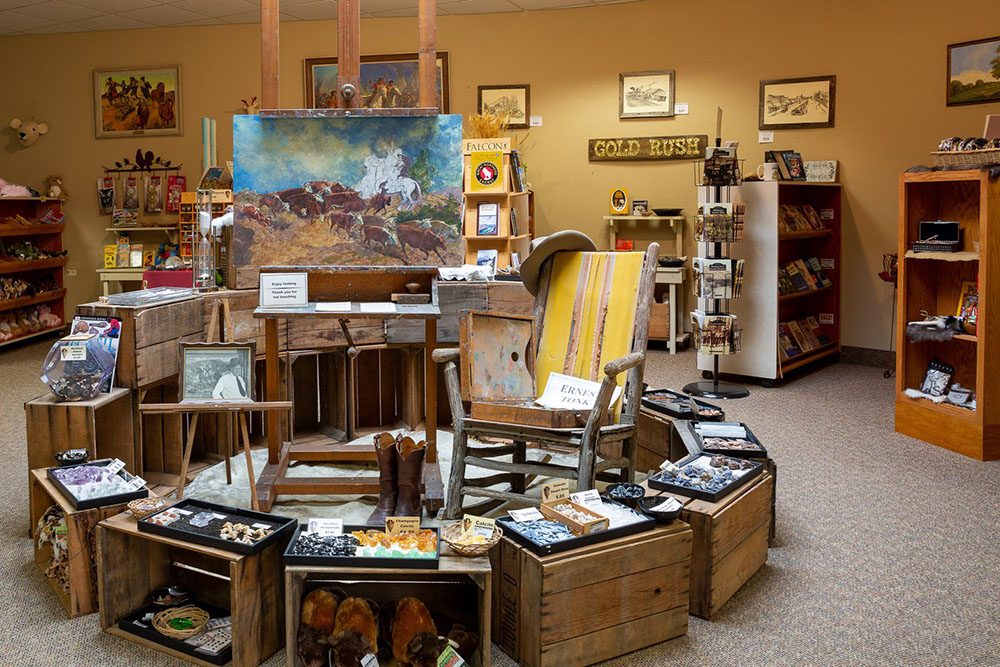
At the end of Cottage Avenue is Cashmere’s museum. Inside is an impressive collection from Willis Carey, an early town resident. I tagged along with a senior citizens’ tour group from Oregon. Our petite guide, Mari, told us the story of the judge. Mari, who grew up in Cashmere, shared more about the Wenatchi Indians and showed us their handwoven baskets and elegant beaded-floral designs. Mishetwa, a Wenatchi woman called Old Mollie, would protest against the white settlers for bringing disease and taking their land, Mari said, shaking her fist in the air like Old Mollie. We saw a photo of the “last powwow” in Cashmere from 1931, with John Harmelt the “last chief” of the Wenatchi. A local history book shows an image of Carey inside his “hobby house” full of ancient relics. In glasses and suspenders, he dons a Native feather headdress. Another text by Eva G. Anderson profiles Carey, saying many Indians “borrowed” Indian-woven baskets from his trove to pick berries.
As we approached items from the settler era, a woman with a blondish bob from the group turned to me: “Where are you from?”
“Um, well, I live in L.A,” that sudden burden to prove I’m from the U.S. But then feeling maybe in Cashmere, I don’t have to, blurting: “I’m actually from Kashmir.” To which, the whole group then oohed and aahed.
“Does it look like it?”
“A little bit,” I told my audience.
Mari directed me to look northwest to find the resemblance.
Outside the museum was the Pioneer Village. Catholic missionaries, miners, loggers, and fur traders arrived in the area in the 1860s. But it wasn’t until the 1880s that people of European descent began to settle here. Log structures recreate those early days, when the town was first called Mission. A school, a church, a stable. Every year, fourth-graders march here dressed up as pioneers. I cringed recollecting that I too have engaged in colonial cosplay. In my diverse Northern Virginia grade school, we had Colonial Day. I wore my Eid outfit, a light blue, checkered skirt and blouse. We made candles and dripped tea bags over paper.
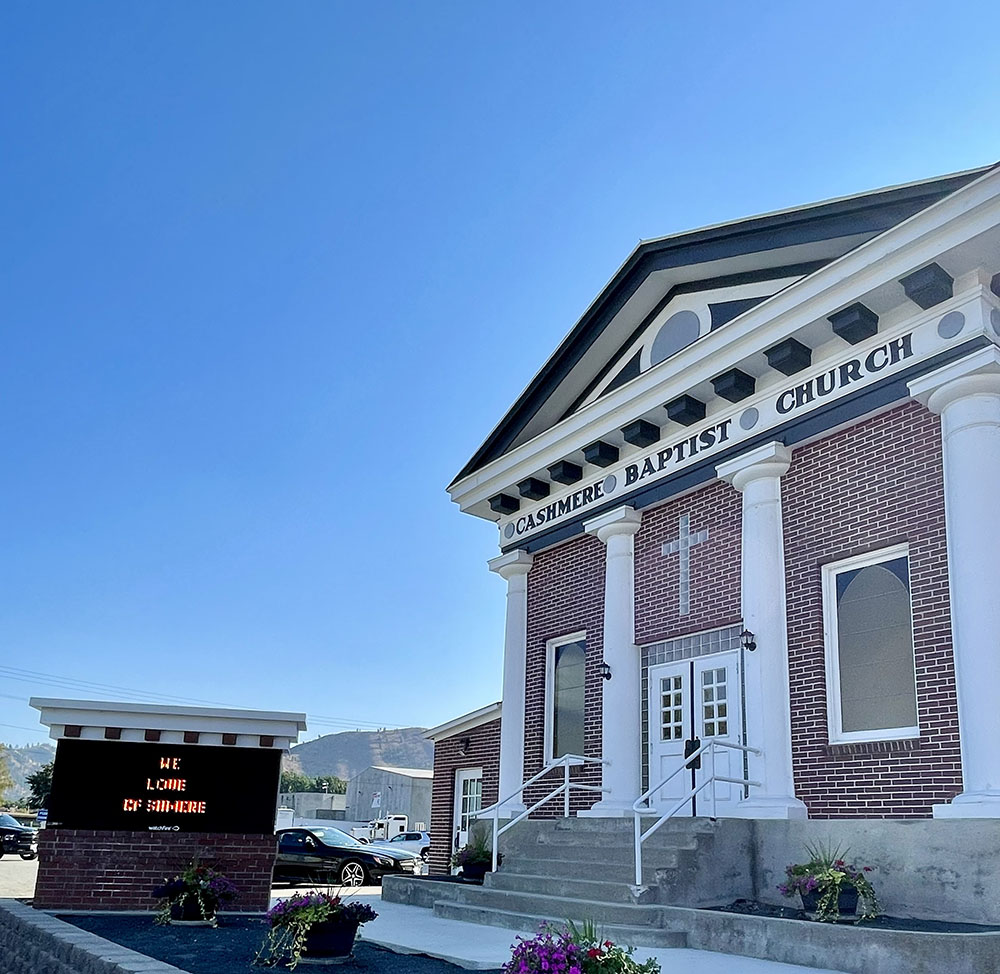
As immigrants, we don’t want to admit our own complicity, reinforcing colonial structures, even if we too were colonized. At the Cashmere public library, I found an atlas depicting the evolving maps of Washington state. In the first map of the “Western Portion of North America,” from the Lewis and Clark expedition in 1804-1806, the bodies of water and mountain ranges are marked. The names of Native American tribes are chaotically scrawled, along with the number of “souls” for each group. The maps evolve to “Washington Territory” and then the “State of Washington” over the century. The legends begin to include Surveyor Generals Office, military reservation, county seat. As the land gets divided, more and more places are named and lines drawn, the legends show Indian reserves and national parks. The colonial logic calls for quantifying the land and people, and then mapping in order to clear out and possess.
But logic alone won’t transform a place. What is also needed is the colonial imagination. To create those new places, new narratives, new peoples, there has to be someone who can render them into existence. Judge James H. Chase, often referred to as “Cashmere’s grand old man,” or as an old-timer here described him, one of the town’s “blue-bloods,” had that kind of imagination. As the story goes — from newspaper archives and books on the town’s early days to the oral tradition relayed to me — there were too many Washington state towns called “Mission.” Mail was mixed up, and rail passengers were confused. In 1904, Chase petitioned to name the town after Kashmir, inspired by Thomas Moore’s famous poem, Lalla Rookh: An Oriental Romance from 1817. Chase, who grew up in New England, had an eclectic career, from heading west during California’s Gold Rush and teaching oratory in St. Louis to serving as a probate judge in Idaho, before making Cashmere his final home.
In 1912, the Cashmere Valley Record did a spread on Chase. A black and white photo shows Chase, then in his 80s, under an apple tree at his orchard around Cashmere. Chase squints in a cravat tie and hat. Next to this, there is an excerpt from Moore’s poem. These two lines are oft-quoted in accounts of the town’s naming:
Who has not heard of the Vale of Cashmere;
With its roses the brightest that earth ever gave,
Moore goes on to extol a suggestive beauty in Kashmir, likening the valley to a blushing bride. Moore apparently never visited Kashmir. Instead, he culled together various sources to build his imagery. In a preface to Lalla Rookh, Moore says he’d become “far more conversant” with this distant region, than localities closer to him because of his extensive study, and Kashmir came to him in “day-dreams.”
Channeling Moore, Chase spoke often of Cashmere in similarly extravagant terms, but almost trying to one-up Kashmir. “Whatever may be said of the Vale of Cashmere; of its fine, bracing, invigorating climate; its marvelously productive soil and wonderful apple orchards, there is yet much to be said (of) the beauties of the country surrounding the vale” here, Chase is quoted as saying.
Logic alone won’t transform a place. What is also needed is the colonial imagination. To create those new places, new narratives, new peoples, there has to be someone who can render them into existence.
At that time, Kashmir was under the reign of the Dogra kings, under which popular uprisings erupted in 1865 and 1931. Kashmir was paradisical, sure, but hardly free; with British colonial rule over the entire Indian subcontinent.
The article also mentions a captivating speech Chase made to railroad officials.
A picture of Kashmir, “the most productive at once in fruits and flowers in all that land,” instantly reminds one of the Cashmere Valley. “As the River Jhelum traverses that vale in India, so flows the Wenatchee here,” he said. Picturesque lakes in the mountains here are “as yet unnamed and as wild as they were a thousand years ago, inviting those of adventurous spirit to come and pitch their tents.”
The romanticization of Kashmir, innocent and pure, emboldened him to romanticize Cashmere. Interestingly, Chase never refers to the population living in Kashmir, nor anyone who lived in Cashmere before.
The town’s distinct rebranding was a boon. Cashmere transformed from an outpost to a booming little locale, with paved roads, irrigation canals, electricity, telephone, canals, the railroad, and hotels.
Pat Morris, a columnist for the local paper, wrote in 2003 that the railroad superintendent initially dismissed Chase’s suggestion of Kashmir, for being “Heathenish.” However, “an Americanized Cashmere spelling was acceptable,” Morris says.
Despite the glee of being in Cashmere, the fact that neither Chase nor Moore had ever set foot in Kashmir, made me uneasy. It was so simple for them to appropriate without feeling any sense of responsibility to the place. Speaking to Kashmiris of my parents’ octogenarian generation, sometimes I hear a sense of pride in Moore’s Lalla Rookh, that someone faraway had sketched them in such a positive light. The way seeing the signs of Cashmere made me feel. Seeing yourself written into the wider world. Copies of Lalla remain on the shelves of Srinagar’s bookstores.
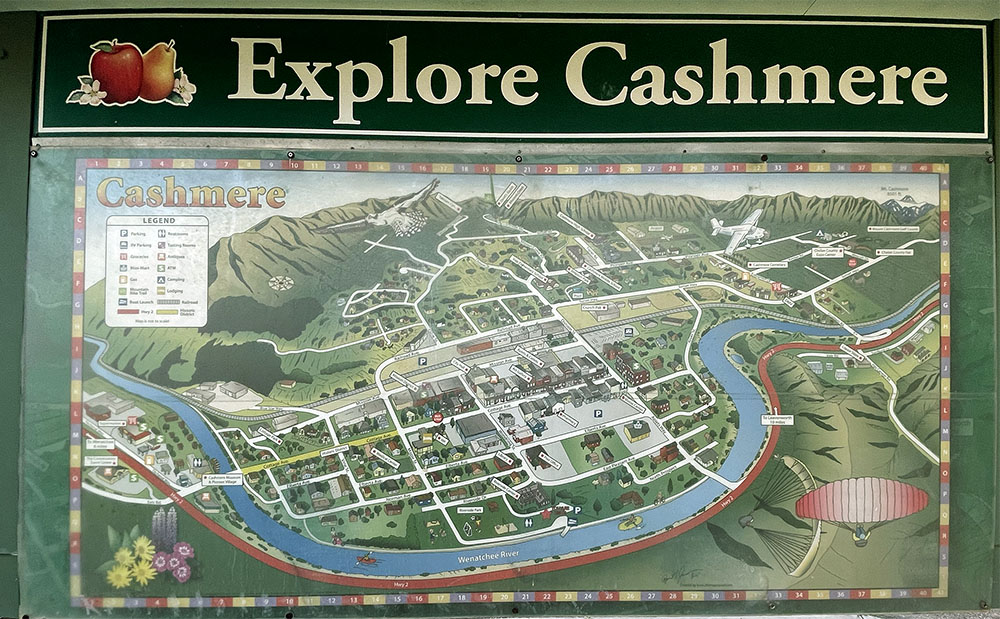
In Cashmere, after Chase’s rechristening of the town there were encounters with Kashmir.
A fascinating series of letters, taking up whole pages, appeared in the Cashmere Valley Record between 1928-1929 from Miss Edith Crace-Calvert to her friend, Mrs. Glenn Caulkins, the wife of Cashmere’s school superintendent. Crace-Calvert and her sister, both spinsters, seem to have spent several years in Kashmir, including living on a houseboat. (They were originally from Tasmania, according to Australian records). Her letters contain the staple derogatory views of that era (locals are “coolies” and villagers are unhygienic). But her writing conveys a passion to educate her friend who lived in the eponymous town. Before these extracts, the newspaper consistently notes Chase’s role in naming Cashmere after Kashmir.
Crace-Calvert writes in May 1928: “How strange you should be living at Cashmere; surely it was named so after on(e) early resident had visited here.” Kashmiris, she says, are a “fine healthy-looking race.”
A year later, she inquires, “if you have the same outlook from your Cashmere as we have here — one foot of snow and frozen hard.” Crace-Calvert details the landscape and wildlife, and her adventures deep into the villages and mountains. She promises to mail a booklet about the people and place, authored by the headmaster of a missionary boys’ school in Srinagar that’s “done so much good.” I recognized that as the Tyndale-Biscoe school, founded in 1880, which several of my relatives attended.
Other glimpses of Kashmir crop up over the century, with presentations about the valley at the Cashmere Woman’s Club; an onion-domed parade float called the “Vale of Kashmir”; and accounts from locals who visited Kashmir until militancy and military occupation would take over in the 1990s.
Kashmir seemed alive in the local popular memory. Elders like Carolyn Meade, who’s lived in Cashmere for four decades, were ecstatic when learning I was Kashmiri. “Oh, are you? Oh, my gosh!” Meade told me about her swashbuckling mother-in-law who’d gone to Kashmir in the 1960s, and rented a houseboat and brought back a teal-green sari. The town also had a florist shop called Kashmir Gardens that closed in 2019, after 70 years.
I went up and down Cottage Avenue, ready to meet Cashmerites who’d embrace me. At the old-timey pharmacy and soda fountain, I volunteered to the bespectacled young woman at the checkout, “I’m visiting from Kashmir,” as she rang up my Cashmere Bulldogs T-shirt, the high school mascot. “So, you have to get something that says Cashmere!” When I asked if her peers knew where the town’s name came from, she smiled and shook her head. Maybe in elementary school they’d learned about actual Kashmir.
At the vintage shop, the chamber of commerce, the bakery, and other spots, I was met with blank stares, when I said I was Kashmiri. Young people either had no clue about Kashmir or the town’s naming genealogy; or they theorized that Cashmere was a Native American term or tribe or a type of pear brand. I didn’t know whether to laugh or cry.
Cashmere is best-known for making the Aplets & Cotlets candy, created by Armenian immigrants. A young worker at the factory shop was aware the town’s name transitioned from Mission, she said, after settlers “heard there was a town in the Middle East called Kashmir and that it looked like here.”
In the local paper, by 2010, a “Cashmere Facts” infographic credits Chase for the town’s naming, but there’s zero reference to Kashmir. In a bizarre blurring, the high school yearbook is entitled “Kahiwa,” which I’d hoped was a reference to Kashmiri kahwa, a cardamom and saffron tea (qahwa is Arabic for coffee, but as the term moved east, it came to refer to a green tea in Kashmiri). I saw the phrase in old basketball team photos, and on the cover of this year’s edition. People think it’s a Wenatchi word, but actually Ka-Hi-Wa stands for “Kashmir High, Washington,” writer L. Burton Brender says in his book about Cashmere. At one point, Cashmere created a town mascot clad in a tricornered hat after Revolutionary War hero, Nathan Hale. But here he became Nathan Vale. A few folks whom I spoke to, middle-aged and younger, informally polled their friends and families in town. None knew about the town’s beginnings or that it came from Kashmir. What a weirdo to Cashmere’s youth I must have seemed, exclaiming: “I’m from Kashmir!”
Columbus wasn’t the first — he didn’t discover this land. We discovered this land; the Creator let us discover this land,” says Iukes, her face framed by wisps of white hair. “Rightfully, the whole country is Indian country.
I drove past Chase Street — named for the founder — deep into the orchards and canyons on the outskirts of town. Endless trees covered the undulating fields. I got a few strange looks from pickup truck drivers. Signs warned: FIRE DANGER and NO TRESPASSING. Pears littered the ground. It looked like Sopore, my father’s hometown. I was there once during the apple harvest, the men stacking wooden crates, much like the ones that dot Cashmere. Except here, there were no soldiers, clutching their weapons, in the middle of an orchard, as I’ve seen, no soldier plucking an apple from a tree. I finally saw sheep grazing along a hillside. Unlike Kashmir, they were corralled by a fence. All over, I kept seeing poplars, towering and narrow. Poplars, or phress, are iconic in Kashmir. They line the road from Srinagar, my mother’s hometown, toward Sopore. Phress huddled around a small, dilapidated burgundy shack, as reeds emerged below. The backdrop of a green meadow. I stood and stared. For a moment, I believed I was in Kashmir. Except here, I was afraid, what if someone barged out of their house brandishing a gun? Some of the dwellings still looked like homesteads, erected with a sense of heartiness. It was these fabled orchards that bloomed from the desert, as the lore goes, at the hands of these residents’ forefathers. A century later, the settlers’ descendants, so secure in their identity, were no longer in need of an origin story.
I made my way to Mount Cashmere golf course. Finding out there was also a mountain named after Kashmir, I’d swooned. At more than 8,000 feet, it’s nearer to the heights of our Himalayan foothills, but lies about 25 miles from town. Looking north, away into the Cascades, as Mari had instructed me, I scanned the series of slopes, competing diagonally, one after another. Which one is it? Is it that one with a snowy summit? Wait, maybe that’s it, just that very tip-top, there? As I searched for Mount Cashmere, I realized that I was, in truth, in search of Kashmir. Or Kasheer, as we call it. At a shop, a church, a school, a farm, in someone’s memory.
Mount Cashmere wasn’t that visible. Here, that’s what Kashmir is like. I had been searching for Kashmir, really, for myself, in this fictional place. Kashmir could remain hazy. No need to know about mass graves. Half-widows. Pandit exodus. Addiction. Curfews. Mental health crises. The land slipping away from those still on it. Throats of mountains being carved out in the name of development. The diaspora burgeoning: With relatives on four continents, the story of loss my parents began 50-plus years ago, starting all over again. I’ll never be Kashmiri enough, or even Cashmerian. I will always be searching.
I stopped by the Chelan County fairgrounds, the site of the “last powwow.” Cashmere is no longer in need of Kashmir. Maybe I’d been looking for connections in the wrong places.
The P’Squosa people became known as the Wenatchi tribe. Their homelands stretch across this valley; the rivers once-teeming with sacred salmon. Like other Indigenous groups, their numbers were gravely diminished due to diseases brought by Europeans.
In the documentary False Promises, which charts their history, 76-year-old Georgia Iukes, who is Wenatchi, sits knitting.
“Columbus wasn’t the first — he didn’t discover this land. We discovered this land; the Creator let us discover this land,” says Iukes, her face framed by wisps of white hair. “Rightfully, the whole country is Indian country.”
In the Yakama treaty of 1855, the U.S. government agreed to grant the Wenatchi bands a reservation on their ancestral lands and fisheries. In the Wenatchi memory, not in the settler stories I heard, also remains the White River massacre of 1858, when U.S. troops stormed a village and killed Wenatchi families.
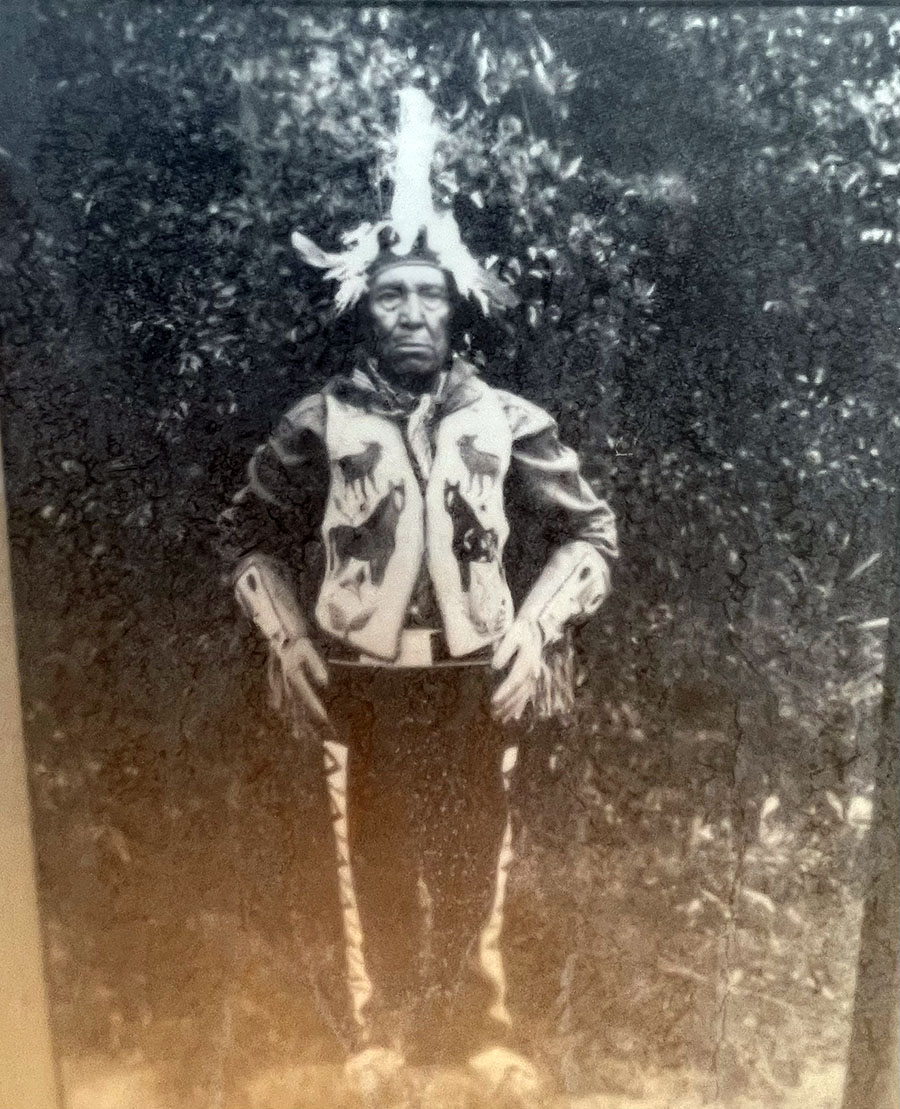
Chief John Harmelt spent his lifetime fighting to establish this reservation through countless letters, petitions, meetings, appeals to all possible authorities, from the military all the way to the president, to demand the government honor this promise.
In federal documents, I witnessed maneuvering, backtracking, betrayal from U.S. officials engaging with the Wenatchi people. The land for the reservation wasn’t surveyed for years, which meant its boundaries weren’t determined, hence it never being set aside.
The struggle came to a head between 1893-1894. A U.S. Indian agent was tasked with proposing parameters of the reservation to complete the survey, but he shifted the location from the original site of what was known as the Wenatshapam fishery. A 40-page filing from the U.S. Secretary of the Interior to the Senate contains the play-by-play of the turmoil surrounding the survey. Protests from white settlers abounded. And guess who? In June 1893, Cashmere’s very own Judge Chase (then still called Mission) wrote a letter to the Secretary of the Interior. Chase says the new proposed reservation in the midst of this budding pioneer settlement would be “very objectionable.”
The plan would “compel all living above to cross the proposed reservation to reach any town for trade or county seat for business, while to divide this valley with an Indian reservation will seriously affect every settler in it above and below,” he writes.
D.M. Browning, then-commissioner of Indian Affairs, tells Chase that the “convenience of settlers will be considered,” and advises Chase that the settlers file a petition to the president requesting negotiations for the sale of the Wenatchi reservation.
Chase and the settlers’ fears were seriously considered by the U.S. government. Their petitions and correspondences played a part in the justification officials used to pursue the strategy of purchasing the reservation land from the tribe. The government accused the Wenatchi of not having taken the reservation seriously.
With relatives on four continents, the story of loss my parents began 50-plus years ago, starting all over again. I’ll never be Kashmiri enough, or even Cashmerian. I will always be searching.
During a December 1893 council meeting with Yakama and Wenatchi tribal members — in a confusing logic, or maybe the colonial imagination — the U.S. Indian agents say the tribes should sell the land, even if the fishery is located on the wrong patch. The agents repeatedly assert they’re not supposed to influence the decision-making, but then they use manipulative language to bully tribal members into selling. Chase is even mentioned by name in the discussions.
In the transcripts, Chief Harmelt catalogs the tribe’s understanding of past accords, saying they don’t want to sell the Wenatshapam reservation, and reject moving its location.
“We thought we would find our country now,” Harmelt says, “We are treated poorly by the whites in that country. If we lived in our own reservation, we would be all right.”
The agents make an offer: In exchange for the Indians’ cession of the fishery reservation, the government would provide allotments of land to the Wenatchi where they currently lived. Harmelt said he’d need to discuss it with his people, so he left the meetings.
In Harmelt’s absence, the agents claimed to the Yakama tribal members that the Wenatchi had endorsed the allotment setup, and the Yakama agreed to the cession of the fishery for $20,000. “The behavior of the government’s agents at the negotiations evidence what any modern court would describe as fraud,” a legal researcher observed.
“Of the 246 Indian signatories to the agreement, not one was from the Wenatchee Valley,” Richard Scheuerman, a scholar of Wenatchi history, says in his book, The Wenatchee Valley and Its First Peoples.
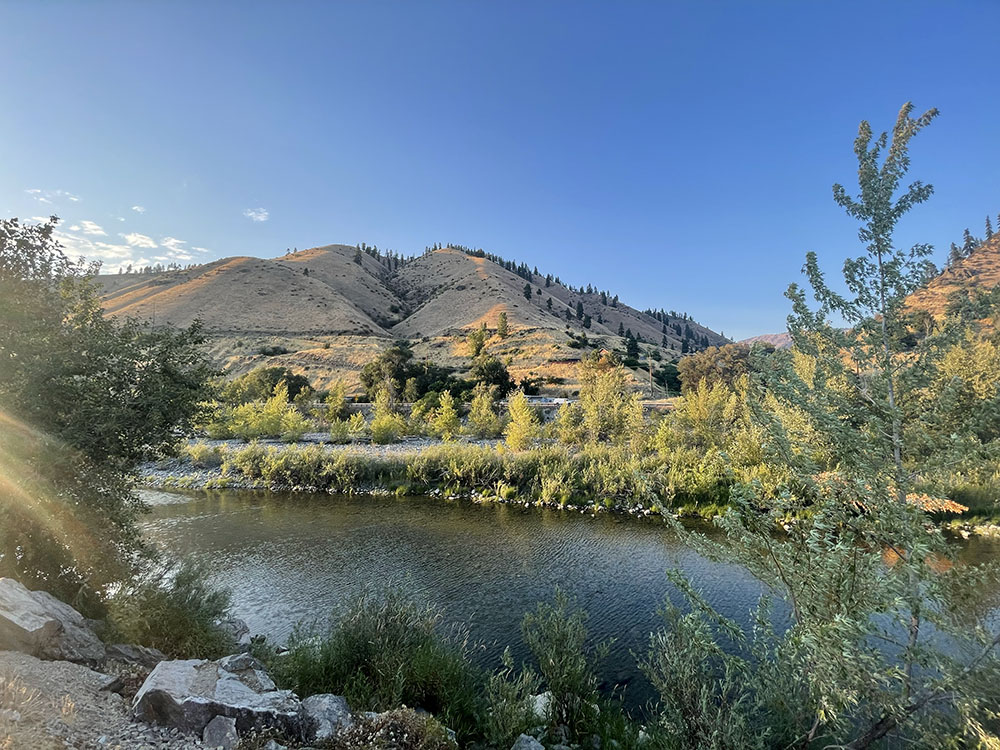
The Wenatchi weren’t allotted the land then. Harmelt persisted. In 1899, he went to Washington, D.C., to meet with U.S. authorities about the reservation. White settlers got wind of this and sent a letter to the Secretary of the Interior — written by none other than Judge Chase. I got a copy of this letter from the National Archives. In black ink, curly lettering, underlined words, the penmanship feels rushed. The June 28, 1899 letter says the local citizens of Mission, soon-to-be Cashmere, want to alert the government of local affairs that “may grow into serious trouble not only to the white people here, but a very serious trouble to the Indians who are instigating the movement.” That phrase, instigating the movement, rings with panic.
They attack Harmelt, calling him “no chief.” They allege he and his followers are looking “to claim, and finally secure the whole of this surrounding country for their reservation regardless of the rights of the white people much of whose land has been patented to them under the homestead laws” for a decade or more. The Indians expect “to get all the land,” they say.
“James H. Chase” is the first signature, the same handwriting as the letter, the J flourishing. It was intimate, eerie to encounter him this close-up, as a real person, not merely the quirky elder statesman, as he’d been portrayed, who spoke annually at Cashmere’s schools about patriotism.
Again, this three-page angry missive held weight. Whose voices get listened to? The acting Interior secretary wrote to the commissioner of Indian Affairs, typed in blue ink, saying he’d read Chase’s letter about the issues between the Wenatchi and “the white people near that place, growing out of the unwarranted claims of the Indians” to the lands there. He orders the commissioner to reply to Chase, and to tell the Indian agent to “disabuse the minds of the Indians of the misconception regarding a separate reservation.” Instead, they should allocate parcels to the Wenatchi on the lands where they are already living, he says.
Like the Wenatchee, they are wild tributaries whose forceful flows stretch alongside the mountains. The only thing missing here was a herd of parched sheep and the clicks of their drover. Eyeing the few pines on the bare range above, I touched the cool water. Light from the sunset flickered on the surface. I rubbed my face, as I did in any village stream back home. I was in Kashmir, in Cashmere. Maybe I could see myself in this small town.
A year later, federal officials allotted some Wenatchi families homesteads, but they levied taxes and fees that the Native Americans could not pay, and the land was lost. White settlers snatched it up. The U.S. government pursued the notorious policy of Indian “removal,” expelling the Wenatchi from their ancestral lands to the Colville Reservation. Annual reports I read from the commissioner of Indian Affairs between 1901-1903, identify the Wenatchi as being “very averse to leaving their homes.”
A handful of elders such as Harmelt chose to stay, but many Wenatchi had no option but to be removed over the next few years. In 1902, Indian families “in wagons and on horseback began the long trek northward,” Scheuerman, the scholar, writes. “Many wept at the thought of never being able to call the valley their home.”
The “last powwow” in 1931 wasn’t merely a final hurrah. The Wenatchi voted there to hire a lawyer to reclaim their land again, according to historian E. Richard Hart. Even into his 80s, Harmelt spoke at meetings and pursued any outlets available. In 1935, the U.S. commissioner on Indian Affairs axed a proposal from the Wenatchi, Hart says, seeking to file a lawsuit against the U.S. Two years later, Harmelt and his wife died in a fire at their home. Every time I heard about the blaze, there were whispers: “It was suspicious.”
The heartbreaking journey of the P’Squosa feels so recent. Unlike towns in the Northeast with welcome signs that boast being “settled” or “founded” in the 1600s. Becoming Cashmere was a bloody process. It is jarring that in the Wenatchis’ final days on the land, is precisely when Chase latched on to the romanticization of Kashmir. To become Cashmere, I realized, another people had to be expunged. (Should I even mention that shortly after this came the Cashmere Knights of the Ku Klux Klan? And a local screening of The Birth of a Nation?)
Kashmir, meanwhile, has been undergoing a process of un-becoming Kashmir. In August 2019, the Indian government abrogated the constitution, scrapping Article 370. These were Kashmir’s last vestiges of autonomy, including allowing only Kashmiris to own land in the valley.
I don’t live in Kashmir, so it’s not up to me to say what should happen. But when I see videos on social media calling for demographic change, for a “final solution” in Kashmir, I wonder: What will Kashmir be without Kashmiris? As the situation in Gaza worsened, the body count mounting into the thousands, a Kashmiri friend called me, hysterical: “They are going to do this to us next, and no one is going to say anything!” The situations differ, but the feeling of imminently vanishing, the world looking away indifferently, is not just a thing of the past.
I have been fixated on the Wenatchis’ last moment on the land. Like someone taking their final breath. Harmelt and others often referred to the land as their “mother.” The U.S. Indian agent authorities describe, in reports, as having to “wean” the Wenatchi off the land. Before being removed, the Wenatchi went out for one more season to pick berries, gather roots. That final time before displacement. Meanwhile, the area was swarming with more settlers. What kind of choice does that leave one?
Images of Palestinians on foot, on donkey carts, in battered cars escaping have saturated my screen. I’d seen a post in April 2024 from Dylan Saba, a writer and attorney in New York City, about the last of his family to leave Gaza. Saba, the son of a Palestinian father and a Jewish American mother, was en route to Gaza at the time. He’d planned to travel there on an aid flotilla from Turkey. His father’s cousins and their families, among the few remaining Christians in Gaza, had been sheltering in a church in Gaza City for six months. They didn’t have access to medicine and other resources.
“They had been committed to staying for a long time, staying in Gaza, because they understood that — were they to leave — there’d be a very very low chance that they would ever be able to return again,” Saba told me in an interview. “But at a certain point, it just became unbearable to stay.”
He was in Istanbul, when his father informed him that their relatives had fled to Egypt. His flotilla mission was also canceled.
“Losing this one remaining, symbolic connection that I carried with the land of Gaza — it was pretty devastating,” he said. But it’s hard to process, “in part, because it’s inseparable from the overwhelming grief and tragedy of watching this genocide play out,” as Israel expanded its war with U.S. funding and arms.
There is a poetic tradition that’s baked into the experience of the Palestinian diaspora, being Palestinian, coming out of Palestinian exile, Saba said, “that is romantic in a sense and tragic in a sense.” For the diaspora, “Palestine is a place that exists in the mind and memory that is invariably the other side of the tragedy of exile.” The other side of that tragedy is, “OK, what was lost? And what was lost was land, and more importantly, a way of being on the land.”
The Colville Reservation is more than 100 miles from Cashmere. It consists of 12 bands who make up the Confederated Tribes of the reservation, including the Wenatchi. To get there from Cashmere, I drove through the never-ending orchards, crossed the point where the Wenatchee meets the Columbia River, passed the Wenatchee Gun Club, left behind golden crests, wound up a stretch of rocky black and brown mountains at more than 3,000 feet with pines sparsely pinned on ridges. Then dropped 500 feet to large canyons and across thousands of acres of flaxen wheatfields with the squat silos and barns of Waterville, Home of the Shockers, and fenced-in buffalos munching. Dust clouds billowed from tractors. Ghostly homesteads with nothing and no one for miles, streets named only for the alphabet, from A to Z, and signs warning of a “Primitive Road.” I was alone and lost cell service. My ears popped and my mouth got drier once I hit dark plateaus. Back along the Columbia, against tawny bluffs and cliffs, people zoomed by on speed boats and jet skis and got out of RVs and tents. Steamboat Rock State Park and the Last Stand Rodeo whizzed by, it was getting greener, against the charcoal-colored shrub-steppes, covered in rabbitbrush and sagebrush. Pioneer Park and Pioneer Museum showed up in little towns. Colonialism, copy-paste. All along, the phress, followed me, at every step, poplars growing no matter how desolate the landscape.
When I arrived at the bridge, a sign announcing I would be entering the reservation and tribal law would be enforced, I froze. To my right, was the monstrous, 550-foot-tall, concrete Grand Coulee Dam. Nearly a mile long, the structure electrifies the region and replenishes orchards and farms now pivoting to thirsty vineyards. It was coming to swallow me. The water was a 150-foot drop below. All I could think: This is what genocide looks like. The area was nothing like Cashmere. Retracing the P’Squosa people’s path through such profoundly varied topographies, which they somehow traversed by wagon, on foot, on horse, I could not unsee it: For me, or any non-Indigenous person to live on this land, this is what happened to make that possible.
As the situation in Gaza worsened, the body count mounting into the thousands, a Kashmiri friend called me, hysterical: “They are going to do this to us next, and no one is going to say anything!” The situations differ, but the feeling of imminently vanishing, the world looking away indifferently, is not just a thing of the past.
John Dick, a great-grandson of Chief Harmelt, was among those to live on the reservation. In False Promises, Dick says he doesn’t feel like he belongs at Colville, since it is another tribe’s ancestral land.
“I want to go back to Wenatchi, I want to stay there, and I want to die there, I want to go home,” he says. His mother used to have tears in her eyes, he says, when she would tell them stories about the Wenatchi Valley, because she couldn’t go back.
The expanse of the longing is the size of the loss. Colonization, capitalism, occupation can induce this kind of colossal grief, past and present. What of my Palestinian friend who’s lost 200 relatives in Gaza? How does one even begin to grieve that?
Once I crossed the bridge, and the vertigo subsided, I saw an ordinary town. People walking out of the grocery store with milk, chatting. Children playing in yards. Neighborhoods of ramblers and pickups. A high school football field. A small casino. A Mexican restaurant. And I only saw a fraction of the reservation, which is 1.4 million acres, home to more towns and peoples. In-house experts here have worked to preserve their Indigenous speech, including nxaʔamxčín, the P’Squosa language.
At the Colville Tribal Museum, I kept seeing photos of women from different tribes, including a smiling older Wenatchi woman, in headwraps. In them, I saw Kashmiri women in their daej, the scarf tied just behind their head, their necks exposed and dangly gold earrings visible. Braids out. One shot shows a female figure hunching in a field, a scene from any village in Kashmir. (Later, when perusing these pictures, my mom gasped and my dad choked up at the sight of one head-wrapped woman; she looks just like my mother, he said).
Woven tule and cedar mats reminded me of Kashmiri wagu or patij grass rugs. Exquisite baskets made me think of my own ancestral baskets I had to leave behind in Kashmir. Snow shoes were reminiscent of the wooden krauw my father wore. Enough, I told myself, trying to make sure I wasn’t now romanticizing these peoples and my people.
So many powerful displays of the Colville tribal members standing tall in their stunning beadwork, made me question: Can we too be proud of who we are? Traditional tilla-embroidered outfits are in fashion at formal events. And younger women lead the songs at weddings, reading transliterated Kashmiri lyrics from handbooks. Yet so many young people speak Urdu, not Kashmiri. Is it a self-inflicted wound or a signal of how to survive? The language is already dying inside of me. But to behold it fleeing from the tongues on the homeland, is its own kind of sorrow.
A memorial to the large numbers of missing Native girls and women in Washington state felt like a sacred space. I jotted a Kashmiri prayer that my grandfather used to say, folded the small sheet and dropped it into the plastic bin. In May, on a day of awareness for missing and murdered Indigenous women, they burn the growing pile of notes “in ceremony and send them on.” Mothers in Kashmir hold up photographs of their missing children, some gone for decades, at sit-ins.
How do we hold all these histories together? How do we ensure yesteryear’s atrocities aren’t repeated today?
Then I spotted Chief Harmelt again. It’s around 1888. He is young. There are three men to his left and a woman to his right. Arms crossed, they’re in ties and coats at a government office in Waterville seeking homesteads. Harmelt stares into the camera. Yet another length Harmelt went to — applying to live on his own land. Officials charged them illegal fees, and those who did file had the land taken.
A museum official informed me that they still needed to approve my research permit, so I wouldn’t be able to do any interviews, adding that “we are a little hesitant to say too much.” At first, I was deflated. But then I found it brilliant. Isn’t that the definition of sovereignty? To decide when to speak, whom to speak to, deciding when to impose your own silences. And who could blame them, after centuries of extraction — land, resources, bodies. As a journalist, I have been guilty of this, wresting people’s stories to feed the beast.
The colonial logic brought with it the measuring of skulls, nose lengths, theories of race, anything to quantify those of us colonized. Out of this necessity to possess, comes collection, and in some cases, ownership of human beings. I found an awful reminder of this in a notice issued by the National Park Service a couple years ago. The High Desert Museum in Oregon had the remains of at least two individuals, who were determined to be of Native American ancestry. Some people bought the remains in 1966 from Kurio Kabin, a former rock shop in Cashmere. The shop was in a part of Washington state “with an active group that regularly looted sites and graves,” the notice said. Tribes work to repatriate such stolen remains.
At Colville, I did have some chats. I won’t tell you what they said. But I learned a lot and made connections. I mentioned a few things about Kashmir. There was an interest in the real place. For the first time that week, I’d felt seen. I’m no activist, but it seemed like the seeds of solidarity. That is a kind of belonging; not to a place, but to each other. No exploitation, no romanticization, just genuine exchange.
I’d come to Colville on a clear day, after wildfires nearby. At a park picnic table, under a giant tree, I wrote in my notebook. Leaves drooping on the long branches obscured the dam. The green was striking against the jagged gray and white mountains. Toddlers squealed.
I reflected on what Randy Lewis, a Wenatchi elder who was among the Indian activists that occupied Alcatraz Island in 1969, says in a film at the museum. My ears delighted in him speaking nxaʔamxčín to chronicle the ancient tale of Spexman, a river dragon. Lewis’ grandfather told him: “We don’t have a lot to give you. I come to you with empty hands,” but “I give you these things,” these stories.
Two teenage boys with long brown hair, whipping in the wind, walked by. They reminded me of my nephews at that lanky age. They will tell their own stories, I was sure of it, and so will we.
A strong urge hit me to hear something in Kashmiri, to return to my own traditions, language, history. I listened to high-pitched Kashmiri folk songs by 16th-century poetess, Habba Khatoon, that my mother would sing and hum in quiet moments, as I returned to Cashmere.
Some Wenatchi continue to call Cashmere and the surrounding areas home. And there are efforts to reclaim aboriginal lands. Last June, the Colville Confederated Tribes purchased about 11 acres around Cashmere, near the Wenatchee River, for the Wenatchi people. And following a lengthy legal saga, the Wenatchi won back their fishing rights at the confluence of the Wenatchee River and Icicle Creek, on their ancestral lands, near the town of Leavenworth, about 10 miles north of Cashmere. The reservation promised in 1855, however, remains unfulfilled.
Reuniting with the land can take on different forms. From Cashmere, I went to Wenatchee, a bigger town about 10 miles south, passing a large sign that read, “Migrant Camp Entry,” a series of white-tarp tents behind a chain-link fence. This was close to Chase’s original acreage. From his perch, several people told me, he’d look out over the green hills covered in wildflowers in spring, and see the resemblances to Kashmir.
Wenatchee, also flush with orchards, sits along the majestic Columbia River. I met Mary Big Bull-Lewis — a member of the Colville Confederated Tribes of the Moses, Entiat, and Wenatchi bands, and a descendant of the Blackfoot tribe — at her Evergreen Gift Shop, where she sells jewelry and other goods by Indigenous artists. A designer, she ran a clothing line called Wenatchi Wear for a time. People would tell her they thought Wenatchis were “extinct.” She’d reply, “I’m here. I’m still here.”
Big Bull-Lewis grew up in Wenatchee, and always felt some gaps: Though she’d had the privilege of rolling in the dirt hills where her ancestors walked, her mother had been adopted by a non-Native woman, and her father’s family were residential school survivors, in which Indigenous children were violently abused for speaking their languages and practicing their customs. And in her own school, they didn’t study local Native history. “Our education, our cultural teachings — that was all stripped away because we were thought to be savages,” she said. Colonization, she stresses, continues to impact Indigenous lives.
The language is already dying inside of me. But to behold it fleeing from the tongues on the homeland, is its own kind of sorrow.
Big Bull-Lewis went on a healing journey, including sessions with a Native counselor and the women’s sweat lodge. She then started the Indigenous Roots & Reparation Foundation, whose programs include a camp where they teach everything from making traditional fishnets to huckleberry-gathering. Big Bull-Lewis’ hope is to build a community center “here on the homelands.” A generous person could donate space for that, “because we’re all on stolen land.” The challenge is whether non-Native people are willing to confront the past and colonization. But it’s not up to Indigenous people to educate them either, she says.
“Thinking that, ‘Oh, it happened so long ago it doesn’t affect me,’ it’s like, but are you benefiting from those things?” Big Bull-Lewis said. “The land that you got that was passed down to you—where did you get that from? How did they get that? How did your great-great-great grandma get that?”
Not long ago, Big Bull-Lewis gathered with a group of P’Squosa at the community center in Cashmere, along the Wenatchee River. Over dinner, they spoke their own language. An elder played his flute. An all-female Wenatchi drumming trio, the Golden Eaglettes, performed. Together, they all sat, braiding sweetgrass.
I stumbled upon a piece of my own past in Cashmere, too. A distant relative of mine had come here in 1998. A letter to the editor by a man named Alan, blasts the paper for not covering the visit of Kashmiris to Cashmere. I didn’t see her often, but this aunty always implored us to never forget our heritage. She’s since passed, but I asked her husband why they drove all the way from Los Angeles to Cashmere. He smiled and shrugged: “When I heard there was a place named Cashmere, I had to go.” The same impulse, aching that lured me here.
How do we hold all these histories together? How do we ensure yesteryear’s atrocities aren’t repeated today?
On a sweltering day, just across US-2 from the museum, I visited the Old Missionary Indian Cemetery. It’s on a hill above the highway, sandwiched between a landscaping supply company and antiques mall. (Unlike the spacious green lawn of the cemetery in town, where many white settlers are buried). Dozens of names of those who died, from infants to centenarians, are listed on a plaque. Those are less than half the people in this cemetery, the sign says. Listen to the silences. Real people who lived, laughed, struggled. A string of beads, a few rocks, and flowers adorned the plaque.
It would be disrespectful to enter, I felt. From the metal gate, I saw grave markers and sage sprouting from the arid earth. There was a salmon-colored headstone etched with: JOHN HARMELT AND WIFE. I pulled a Kashmiri silk scarf halfway over my head, and cupped my palms, and recited a few verses my mother taught me. Whether a matter of faith or not, it is a reflex. A ritual I do at my ancestral cemeteries in Srinagar and Sopore, the only plots of land I can still claim there.
I wonder if there’s a small comfort here, at least their ancestors are resting in their own land, across from the river. Sometimes I think it sad that my maternal grandmother was buried in Malaysia in 1991 also along a highway, a sign of where relatives were displaced as the conflict escalated, far from my grandfather buried in Kashmir, whose great love for her is a legend we retell. I imagine Chief Harmelt’s resting place would’ve become a shrine in Kashmir — what he did for his people. Just above, the clouds split, in such a spectacular way, rays shooting down. If this were a Kashmiri shrine, women and men would be crying out their hearts, and the grille would be covered in a rainbow of cloth amulets, an entreaty left for the saint to answer. But this isn’t Kashmir. And it’s not Cashmere. As the P’Squosa named it, this is Nt’wt’c’kum — the Soaking Place.



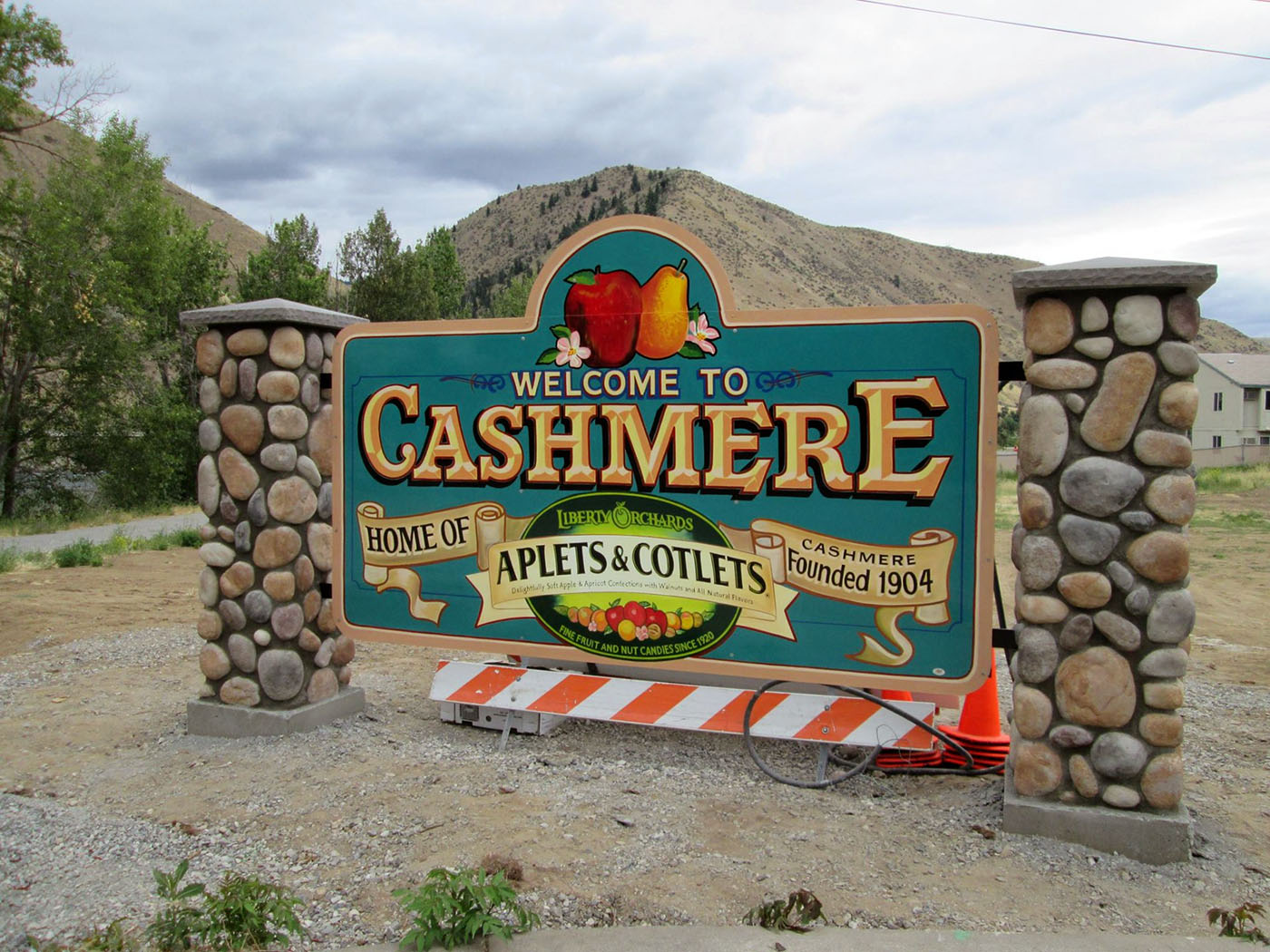
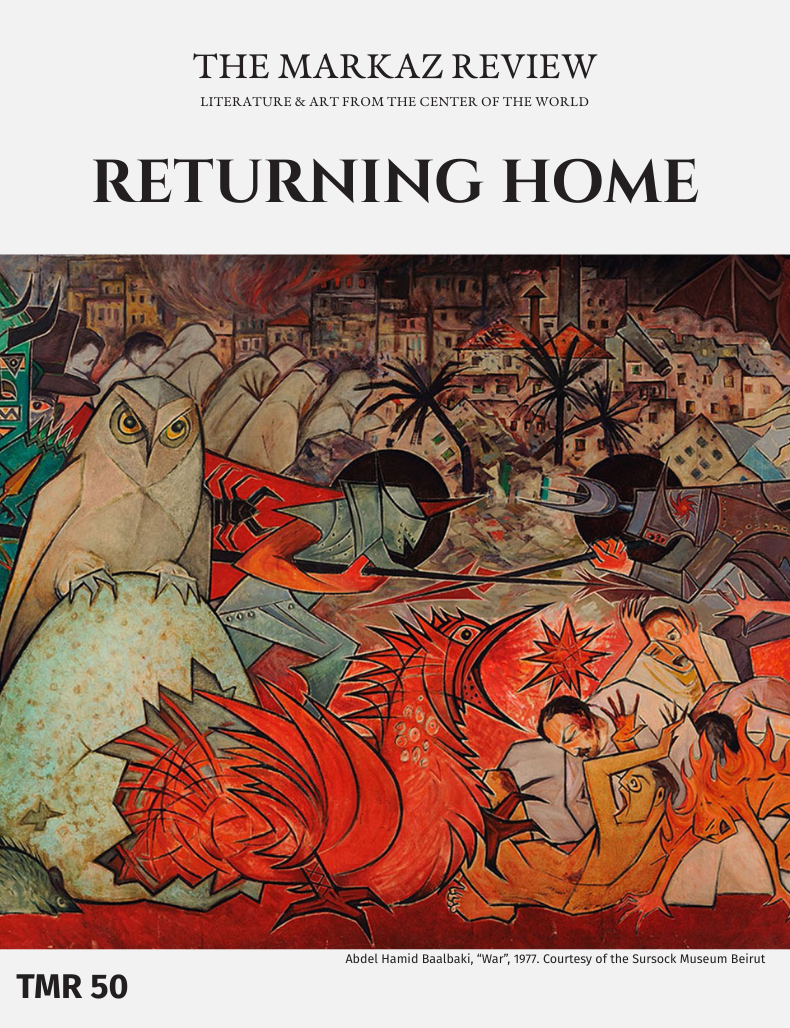
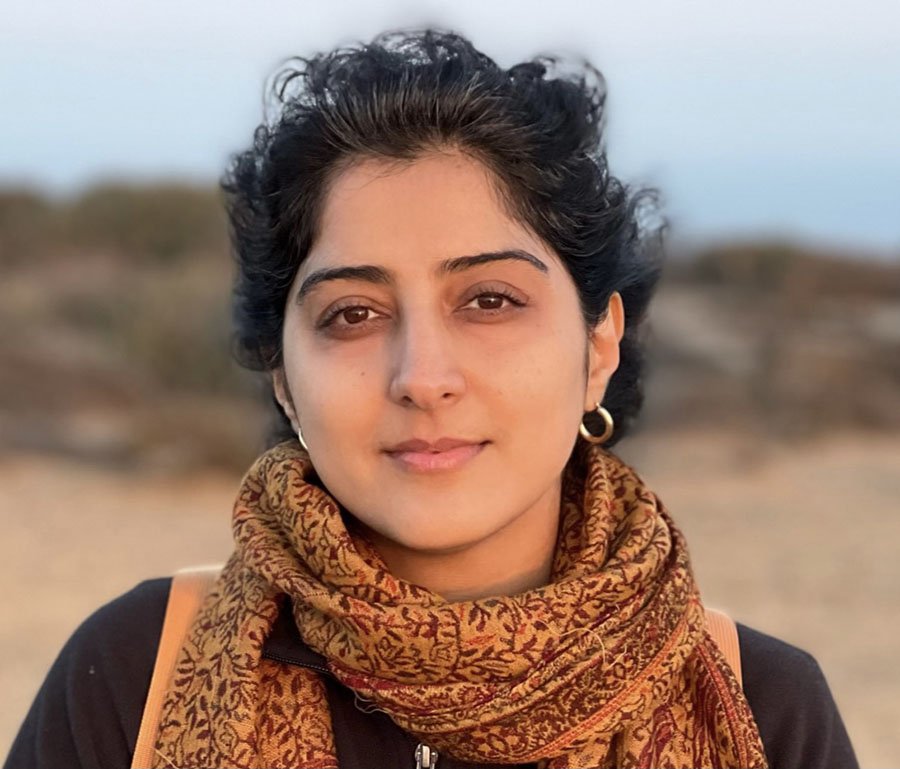
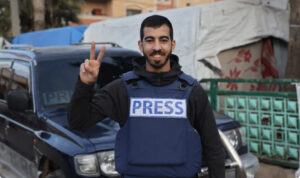
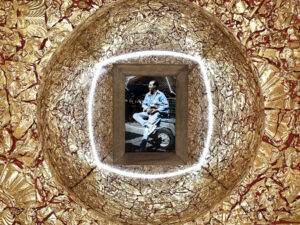

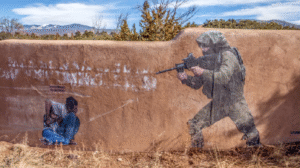

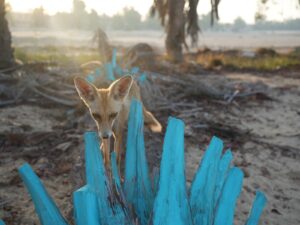
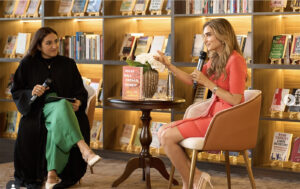
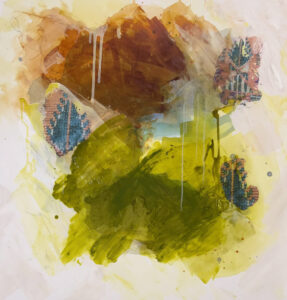


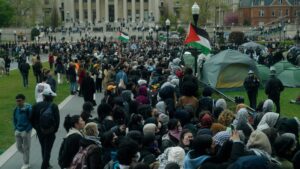
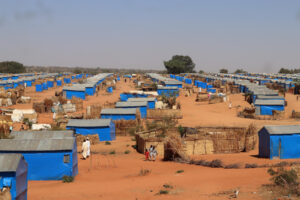
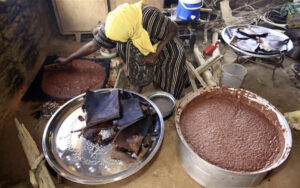
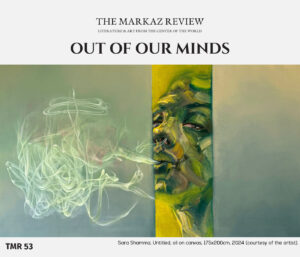
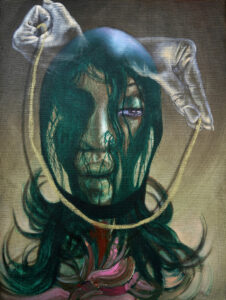
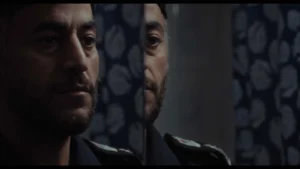

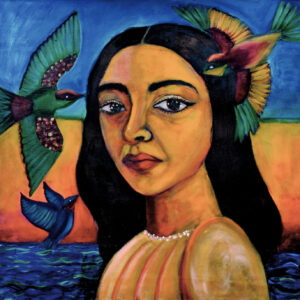
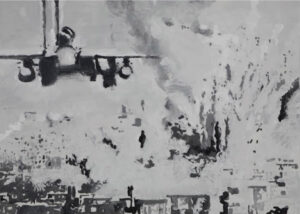


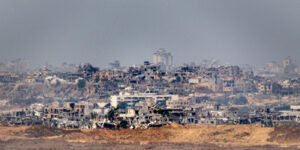
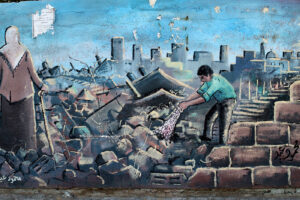

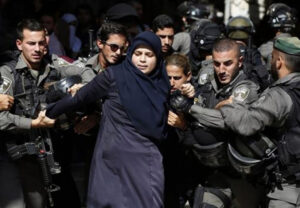

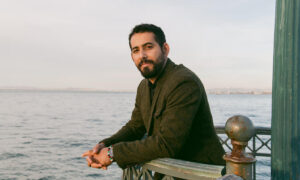
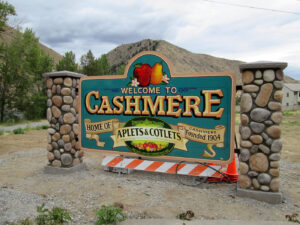
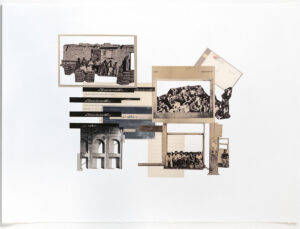
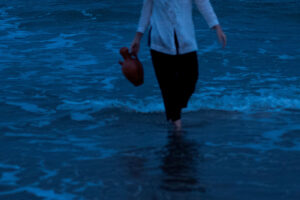
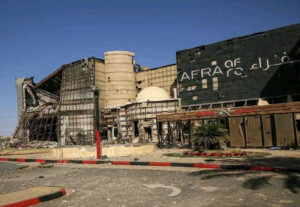
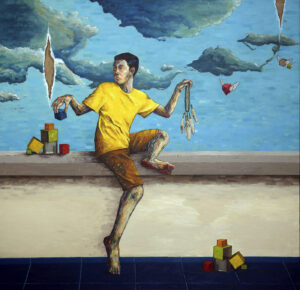



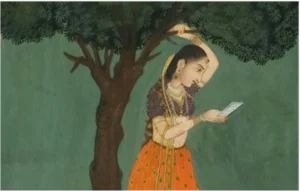

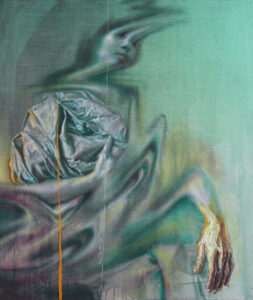

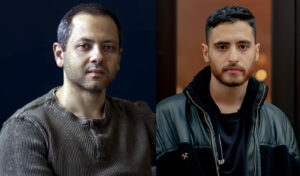
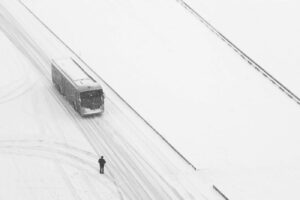
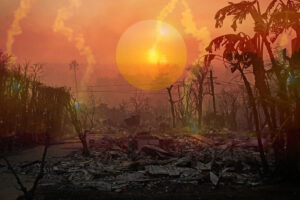
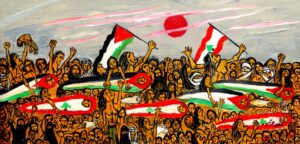

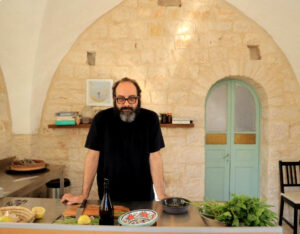


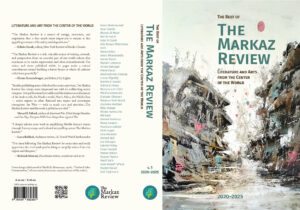



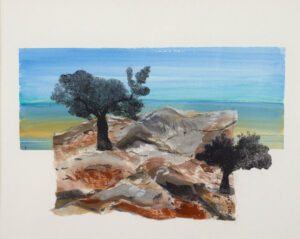



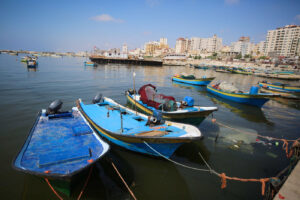


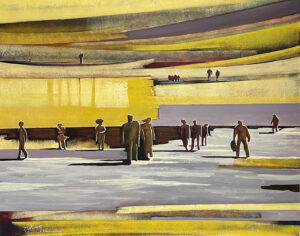
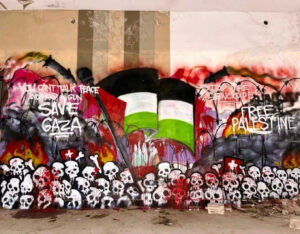




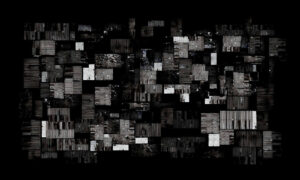







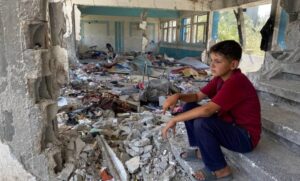

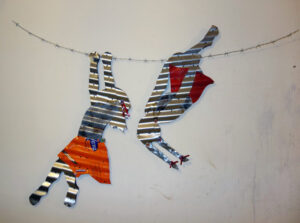

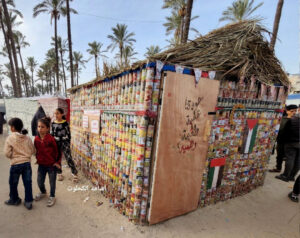



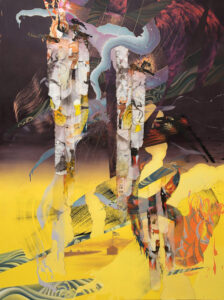

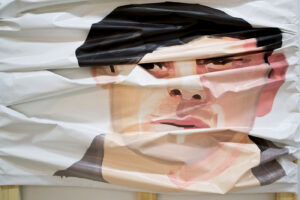
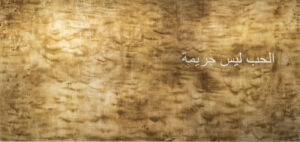
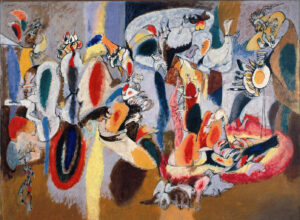

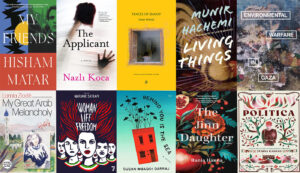
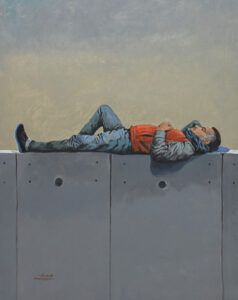

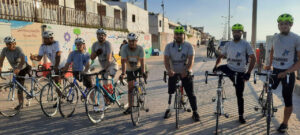


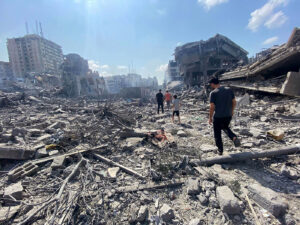



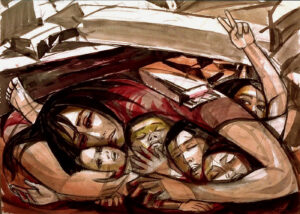
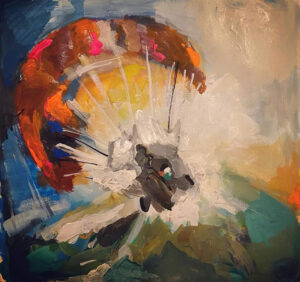

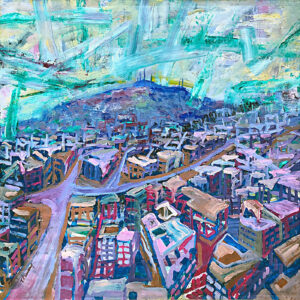

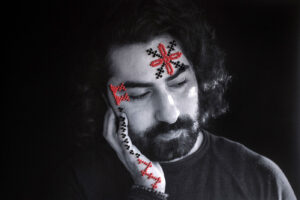
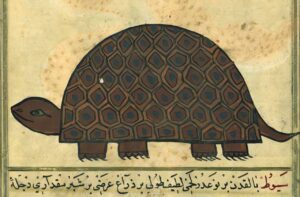
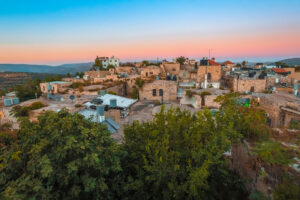






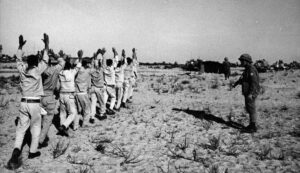


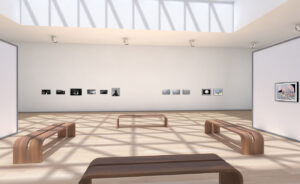








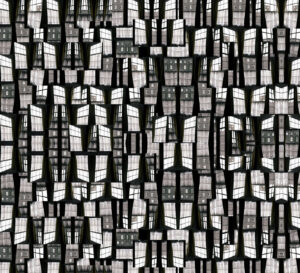

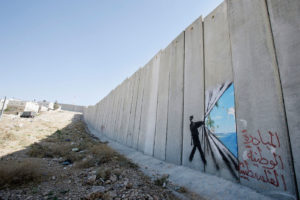
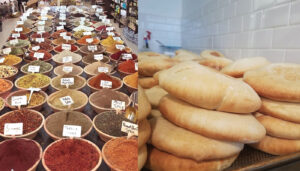

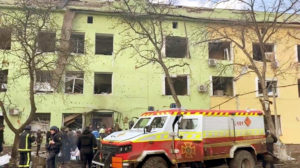



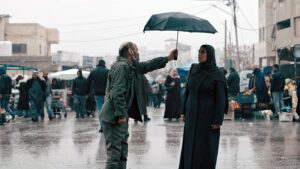
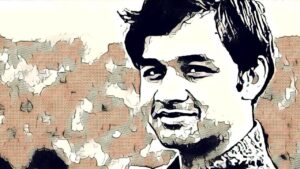
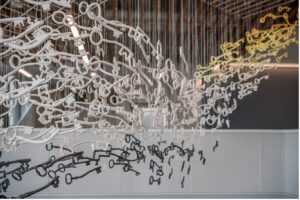
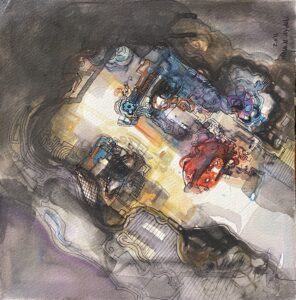

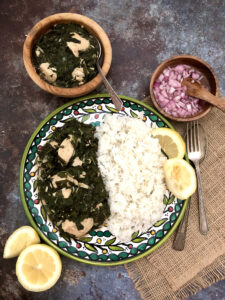
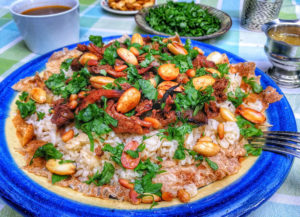

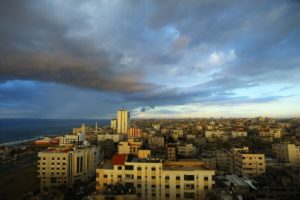
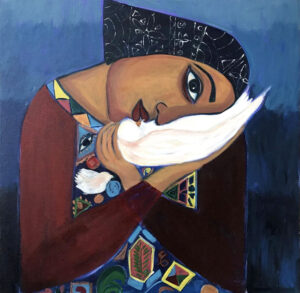
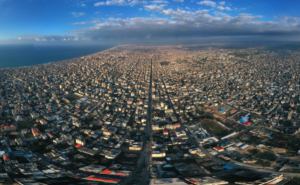


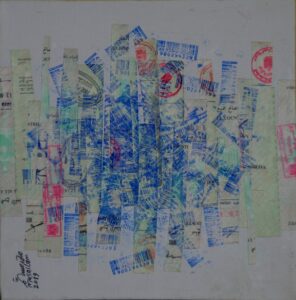
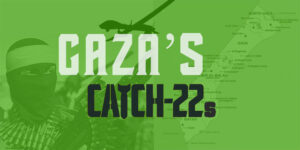

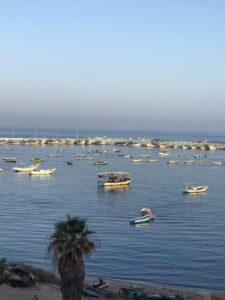


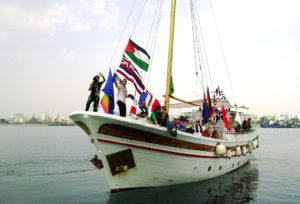


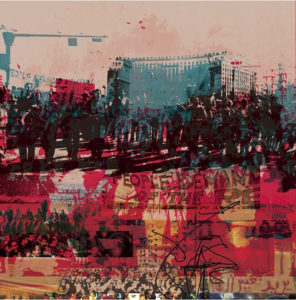
Beautifully written
Beautiful.
A great heart-touching write-up, very emotional & nostalgic as I also belong to Kashmir the scenic valley occupied by India making it highest militarized zone in the world. I do imagine Cashmir is America may be resembling our Kashmir as the author has been trying to get the two locations on a same page- the Kashmir& Cashmir
A fantastically expressed story – connecting Cashmere and Kashmir!
Thank you for a beautifully written, well-researched, and poetic piece. I grew up in Cashmere on one of the apple orchards you mention and had heard some of the stories of Moore and the naming of Cashmere for Kashmir. I loved the insights you brought to my hometown and also your challenges to the colonial legacy. Your analysis of the Wenatchi people added another dimension to the piece, and I’m so glad you quoted Dr. Scheuerman, who taught history/social studies and English to many of us in the 70s and early 80s. Your piece should be required reading in all Cashmere high school classes. Thank you!